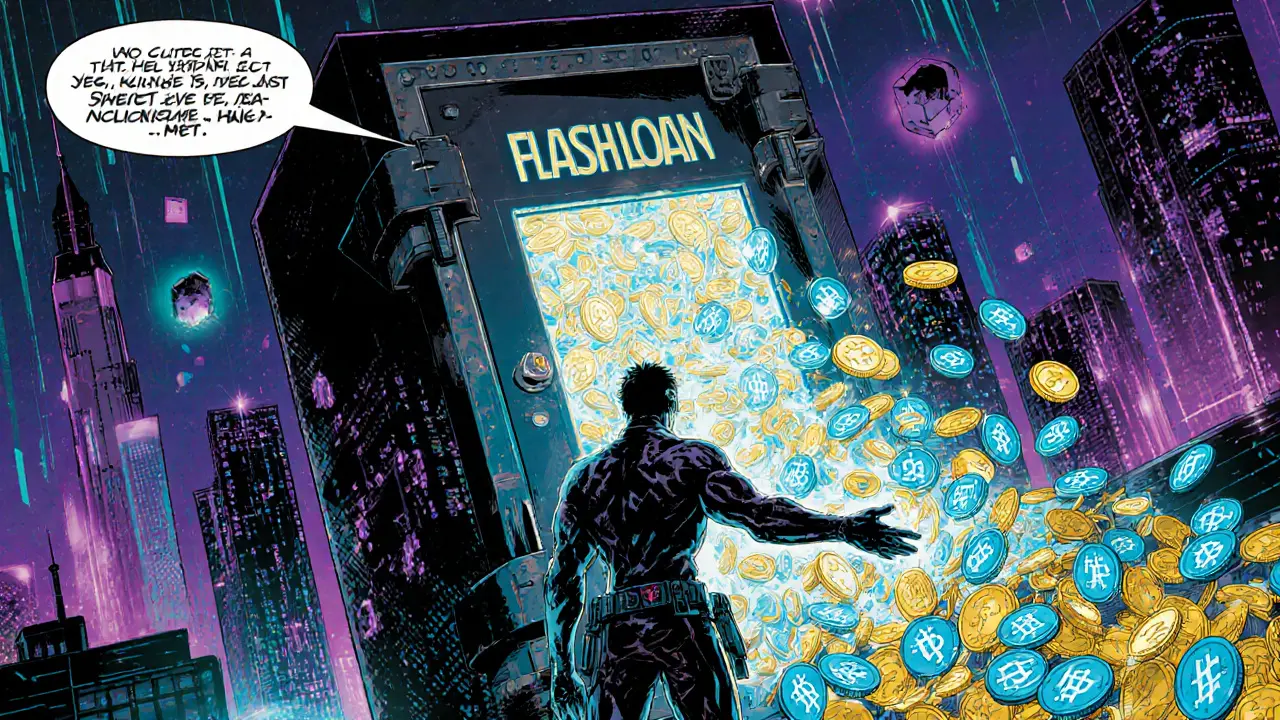DeFi Flash Loans Explained
When working with DeFi flash loans, instant, collateral‑free borrowing that must be repaid within a single blockchain transaction. Also known as flash loans, they let developers tap huge liquidity for a few seconds, then settle the debt before the block closes.
These loans sit on top of smart contracts, self‑executing code that enforces loan terms without a middleman. Because the contract validates repayment automatically, users can execute complex strategies—like price arbitrage across multiple DEXs—without ever posting collateral. DeFi flash loans therefore open doors for rapid profit, but they also expose a thin surface for reentrancy attacks, a vulnerability where a contract’s code can be called back before the first call finishes. Understanding how these attacks work is crucial for anyone building or using flash‑loan‑driven apps.
Key Concepts That Shape Flash‑Loan Use Cases
First, arbitrage, buying low on one market and selling high on another within the same transaction, is the most popular flash‑loan play. Traders can borrow a massive sum, snap up an underpriced token on one exchange, sell it on a higher‑priced venue, and settle the loan—all before the block ends. Second, collateral‑free borrowing, the ability to lock up no assets because the contract itself guarantees repayment, fuels advanced tricks like self‑liquidation, debt restructuring, and even voting‑power swaps in governance protocols.
These ideas link together in clear semantic triples: DeFi flash loans enable arbitrage, flash loans require smart contracts, and reentrancy attacks exploit flash loans. When a developer designs a flash‑loan flow, they must ask: does the contract check balances before and after the call? Does it guard against recursive calls? Answering those questions reduces risk while preserving the high‑speed profit potential.
The real‑world landscape reflects both opportunity and danger. Recent posts on our site dive into reentrancy defenses, show step‑by‑step flash‑loan arbitrage scripts, and break down how DeFi protocols like DeFiPie and Anatolia Token use flash loans in their lending engines. You’ll also find case studies on how security lapses turned flash loans into exploits that drained millions. By the end of this collection, you’ll see the full spectrum—from safe, profit‑making patterns to the pitfalls that have led to headline‑making hacks.
Ready to see examples, learn protective coding patterns, and discover the newest flash‑loan strategies? Below is a curated set of articles that walk you through each angle, giving you the tools to act confidently in the fast‑moving DeFi world.
Learn how flash loan providers work, compare top platforms like Aave and dYdX, and get practical steps to launch your first flash‑loan strategy in DeFi.

